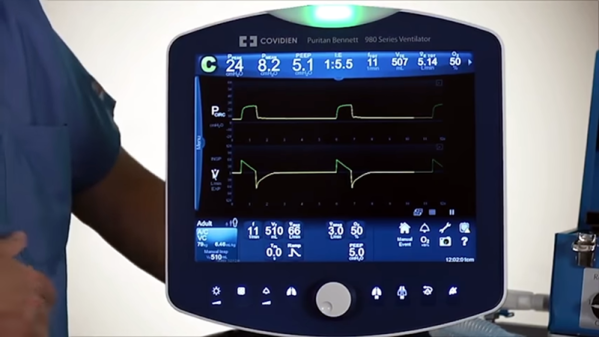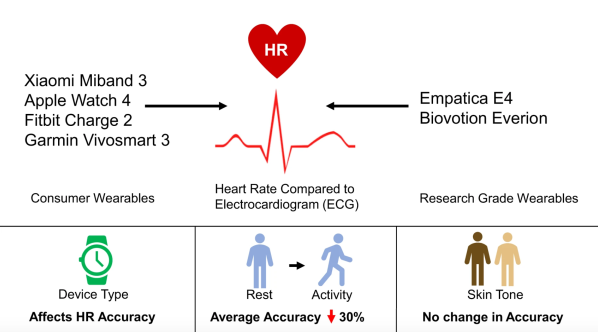Wearables are ubiquitous in today’s society. Such devices have evolved in their capabilities from step counters to devices that measure calories burnt, sleep, and heart rate. It’s pretty common to meet people using a wearable or two to track their fitness goals. However, a big question remains unanswered. How accurate are these wearable devices? Researchers from the Big Ideas Lab evaluated a group of wearables to assess their accuracy in measuring heart rate.
Unlike other studies with similar intentions, the Big Ideas Lab specifically wanted to address whether skin color had an effect on the accuracy of the heart rate measurements, and an FDA-cleared Bittium Faros 180 electrocardiogram was used as the benchmark. Overall, the researchers found that there was no difference in accuracy across skin tones, meaning that the same wearable will measure heart rate on a darker skin-toned individual the same as it would on a lighter skin-toned. Phew!
However, that may be the only good news for those wanting to use their wearable to accurately monitor their heart rate. The researchers found the overall accuracy of the devices relative to ECG was a bit variable with average errors of 7.2 beats per minute (BPM) in the consumer-grade wearables and 13.9 BPM in the research-grade wearables at rest. During activity, errors in the consumer-grade wearables climbed to an average of 10.2 BPM and 15.9 in the research-grade wearables. It’s interesting to see that the research-grade devices actually performed worse than the consumer devices.
And there’s a silver lining if you’re an Apple user. The Apple Watch performed consistently better than all other devices with mean errors between 4-5 BPM during rest and during activity, unless you’re breathing deeply, which threw the Apple for a loop.
So, it seems as if wrist-worn heart rate monitors still have some work to do where accuracy is concerned. Although skin tone isn’t a worry, they all become less accurate when the subject is moving around.
If you’d like to try your own hand with fitness trackers, have a look at this completely open project, or go for the gold standard with a wearable DIY ECG.














